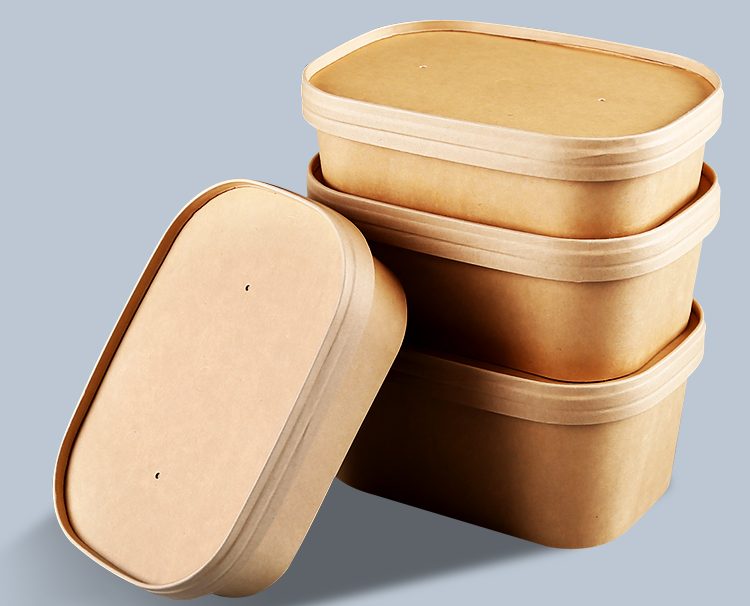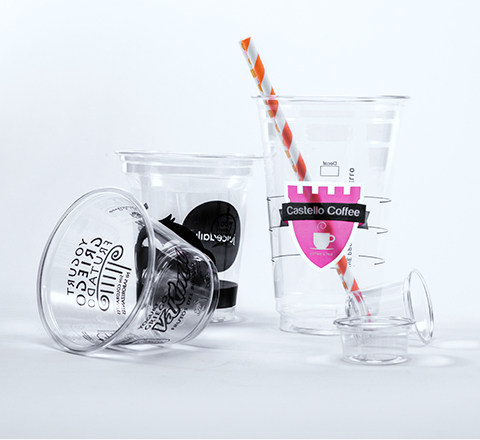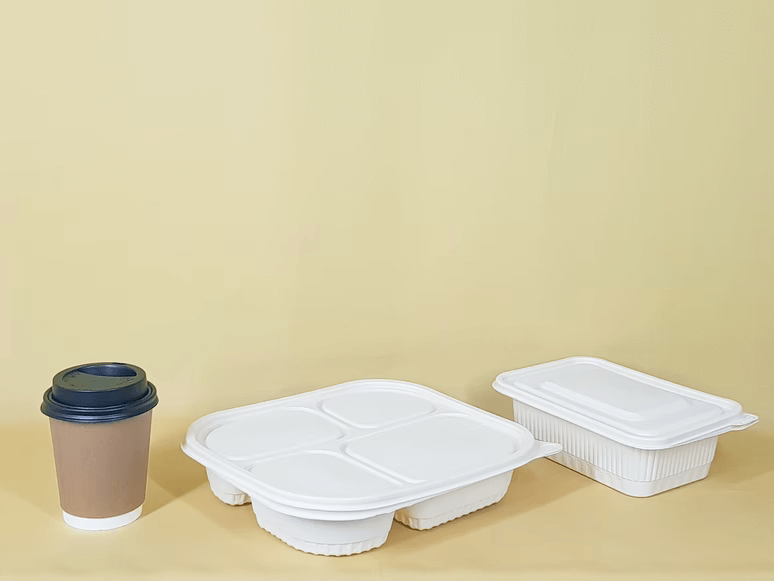The delivery of hot food is the new trend, and it has grown more in recent years. In the wake of the pandemic, people are primarily working from home, ordering food online more than ever. The food delivery apps like Zomato, Uber Eats, etc., have made it more convenient for people to order hot food and enjoy lip-smacking dishes.
The sudden rise in this trend has made several eateries start takeaway deliveries for the first time. It means that the companies are slowly learning how to deliver food to various locations. This makes them ask one common question that they always doubt, what is the best packaging material for food delivery?
Some of the best hot food packaging materials opted by most high-end companies include plant-based plastics, cardboard, aluminum, styrofoam, etc.
Hot Food Packaging Materials
Delivering hot food is different from eating at a restaurant or cafe. It means, as an eatery or restaurant, there are a few things that you need to make sure of so that the food reaches your consumers safely. Also, not all materials are suitable for hot food, so we list out only the best ones available.
When it comes to delivering hot food, several options are available, and each one has its benefits. Let’s discuss a few common and popular ones.
Styrofoam
This hot food packaging material is made from polystyrene foam that is good for insulation and is hence one of the most recommended choices.
Temperature Limits
Styrofoam is best for food items with a temperature of up to 175°F. However, it is not recommended for food items at boiling point.
Common Applications:
Styrofoam has several commercial and domestic applications. They are widely used for appliance and home insulation, food services, surfboards, lightweight, protective packaging, automobile parts, food service, and food packaging services.
Eco-Friendliness:
Though we mentioned earlier that styrofoam is not very environmentally friendly since it doesn’t get recycled easily, it takes time, but the material is recyclable and maybe a good choice. Moreover, as mentioned, the material can be reused, which means that people will not throw it away in the environment very often. This is one of the best choices for restaurants since it helps cut costs to a great extent.
Pros
- It is a potent gas and moisture barrier and is popular for hot food packaging.
- Rigorous tests were done, and it was concluded that a minimal amount of substance transfer occurs between the foam and food.
- The material is light in weight, so it is the best choice for delivering food items and other similar things.
- The material is easy to use, and it is one of the primary reasons businesses and restaurants choose this product for hot food packaging.
Cons
- Looks relatively inexpensive since it is not available in fancy boxes.
- It is hard to recycle and hence is not environmentally friendly.

Bamboo Fiber
Bamboo’s inherent characteristics make it one of the best materials to produce sustainable food packaging. Eateries can choose to pack both hot and cold food products in this particular material. It is also one of the most robust materials available for food packaging and is a better choice than most other alternatives.
Also, it is a product of nature and so is an abundant and biodegradable renewable resource.
Temperature Limits
Since the material is listed in our list of options available for hot food packaging materials, we know it is a suitable choice for packing hot food items. The fiber content of this material adds to the tensile strength of this choice. The temperature range of this material is about 25 c to 900 c, and the recommended heating rate is about 10c/min.
Common Applications
As mentioned earlier as well, the properties of this particular packaging material are versatile, and this is because it is used majorly in the textile industry. It is used for construction, in industries, and packaging food and drinks. It is also used for decoration purposes. It is highly durable, has high tensile strength, and is a stable choice.
Eco-Friendliness
Most of the bamboo grown is grown in different parts of the world, and among the different types of bamboo grown is eco-friendly. When growing bamboo, insecticides or fertilizers are not required and only need a little water. It is one of the most sustainable materials and is highly recommended for companies who can afford this packaging material. It is one of the best options of packaging for hot food delivery.
Pros
- One of the more robust alternatives compared to the ones listed in this list. It is the best choice for delivering food over long distances.
- The packaging boxes and other solutions produced using this material have a superior finish and provide better performance for hot and cold food items.
- It has greater tensile strength than steel as well.
- The compressive strength of the bamboo fiber is also good and is, therefore, a suitable choice for delivering food items.
Cons
- The quality used should be high-end since toxins are found in some of the low-quality products.
- Is an expensive choice as compared to the other ones available on the list.

Cardboard/Kraft Paper Cup and Bowl
Cardboard or Kraft paper is one of the best packages for hot food delivery. Kraft paper is the most potent form of paper so that it can store sugar and dried fruits.
Cardboard/Kraft Paper Cup and Bowl is made using the pulp obtained from pine and birch trees. These trees grow faster than other hardwood trees. These trees are plentiful in numbers. It is one of the best hot food packaging materials.
Temperature Limits
The temperature limit depends on the plastic lining used to make it leak-free.
Common Applications
They are leak-proof, so they can be used for serving sauces and curries.
Eco-Friendliness
It is very eco-friendly. Cardboard or craft paper is one hundred percent biodegradable and recyclable
Pros
These can be used multiple times and are leakproof.
- These are manufactured with low energy consumption & raw material is readily available. So there’s no shortage.
- The cardboard packaging boxes are biodegradable. They are made up of recycled material and pulp of trees.
- No bleaching agent or dye is used in the manufacturing process. So it is recyclable.
- This packaging does not cause any damage to marine and other animals if eaten by them.
Cons
- A little expensive in comparison to foam food packaging.

Plastic
Plastics are known for being rigid and leak-resistant. Therefore plastic containers are very durable. Plastic containers are great for packing hefty meals like pasta/rice dishes.
The plastic containers are basically of three types. These are polylactic acid (PLA), polypropylene (PP), and polyethylene terephthalate (PET).
- POLYETHYLENE TEREPHTHALATE (PET)
These containers are usually clear and durable. They do get easily punctured, so it means they can protect your foods from any outside contamination.
- POLYPROPYLENE (PP)
Polypropylene is used in the catering as well as the healthcare industry. These containers are solid and durable. They can easily resist impact. Therefore they are considered ideal for packaging and transporting.
- POLYLACTIC ACID (PLA)
Eco-friendly and sustainable, PLA containers are made of renewable sources, like sugarcane, sugarcane, and other plants.
Temperature Limits
The temperature limit of polyethylene terephthalate (PET) is 120°F. While the minimum temperature limit of polypropylene (pp) is -4°F to 14°F, and the maximum is 212°F to 266°F. The polylactic acid (PLA) containers can be useful up to 140°F.
Common Applications
The PET containers can be used for Packaging cold foods and Storing meals in the refrigerator. The polypropylene boxes can be used for Packaging hot and cold foods. It can also be used to heat meals in the microwave and store meals in the fridge. The polylactic Acid containers are used for Packaging cold foods.
Eco-Friendliness
All the plastic containers are recyclable and reusable. But like many other plastic materials, PP, PLA & PET containers can be harmful to animals & marine creatures.
Pros
- PET
These are recyclable & can be disposed of easily. Cold foods like salads and ice cream & sprouts can be packaged and stored in polyethylene terephthalate containers.
- PP
Polypropylene plastic containers are recyclable, leak-proof, and sturdy. Their strength makes them ideal for use at both hot and cold temperatures. So you can use them for packing a variety of meals.
- PLAY
Since PLA containers are made from natural resources like sugarcane and cornstarch; therefore the container is commercially compostable and biodegradable. These are also very durable & any food can be quickly packaged.
Cons
- PET
When these are exposed to high temperatures, they leach the pollutant, antimony, into your foods
- PP
It can cause harm to animals if swallowed by them.
- Polylactic Acid Containers
The weakness of this material is that it can quickly melt at high temperatures. Therefore it can not be kept inside of a car on a scorching day
Foil/Aluminum
Aluminum containers are widely used for packaging in the foodservice industry. They can be easily reused for storing food and often microwaved for defeating food.

Aluminum or foils are generally used for packaging a significant amount of food that customers want to take out. These are demanded in catering events as well.
Caterers preferred aluminum because they considered it ideal. Because it is helpful in cooking dishes in the oven and can be used to serve meals in the same container. These are grease-resistant and flexible as well. This makes them best for hefty packaging dishes.
Temperature Limits
The temperature limit of Aluminum containers lies between -20°F to 400°F.
Common Applications
Aluminum packaging can be used to bake dishes in your microwave. These are very helpful, whether baking cupcakes, pastries, or your favorite cake. You can also use them to store leftover food in your refrigerator. It is widely used in restaurants and catering businesses to pack foods. You can store both cold and hot food in it.
Eco-Friendliness
Although aluminum containers are recyclable, the smelting of aluminum releases sulfur dioxide and nitrogen dioxide. This can mean pollution, smog, and acid rain.
Pros
- Aluminum food containers are designed to be light and symmetrical based on the storage needs. This saves your space in storage and transportation.
- Aluminum food containers are usually leak-proof, and therefore you do not have to worry about ending the oil and gravy spillage.
- The impermeable metal keeps your delicious food fresh and fresh for a very long time.
- These recyclable containers come with air-tight lids. So you can use them again.
- These are high-quality containers, so they are non-toxic and non-reactive. The food does not get oxidized.
- You can reheat or keep your food safe in an aluminum container in the fridge.
- The foil containers can withstand high temperatures, unlike foam and plastic packaging. These containers can be easily put into grills and microwaves many times without any damage to the containers.
Cons
Aluminum foils can be easily damaged in carrying food. Their shape gets easily damaged. So the food like pastries & chips can not be kept in it. Also, it is a little expensive given the transport issues.
What To Consider When Choosing A Package For Hot Food Delivery?
The life of hot food packaging can be surprisingly complex. Several stages are involved in preparing and sending it out to customers’ doors. Amidst this, each step is essential. This is because each step plays a role in purchasing processes representing a hundred different commitments, right from a cook, to marketing experts, logistics team, distribution centers, staff, customers, vendors, etc. This is why it is significant to ensure that the item’s overall value is protected throughout.
With appropriate packaging, you can quickly achieve this. One question that arises is how to find the proper packaging or what to consider when choosing a package for hot food delivery. Well, we have listed six major factors that you need to consider before selecting your packaging for food delivery. Let’s have a look!

Size and Safety
The best way to save money is to stick to standard sizes and shapes that are even easy to produce. While cute sizes can appeal to customers’ eyes, it is not worth the cost and challenges associated with packaging production. Selecting standard sizes and shapes creates room for flexibility and convenience during handling, storage, and transportation.
Preventing bespoke packaging options will enable you to place small orders besides reducing your costs. Size plays a vital role in deciding which packaging fits you best. You will require containers that are generally not too large for your food. You would not want your food to slide around during delivery, thus being a mess and an unappetizing pile.
On the other hand, you would also not want to go for too small containers that leave your food spilling out of the sides, leaving it cramped. All in all, looking for the correct size automatically helps you maintain the safety and quality of food. Please make sure you pay attention to it.
Cost
The more complicated your packaging is, the longer it will take to prepare your products for sale. Generally, consumers are not fond of fussy packaging. Hence, keeping things sober with heat-sealed ‘pull open’ bags that are clear can be a great idea. Considering the cost-effectiveness of the packaging, it is influenced by various factors. This includes sizes, materials, your buyer, and their order quantity. In the end, all that you need to consider is cost. In other terms, it is essential to choose packaging that helps you save money in unconventional ways.
If we dig a bit more, we suggest choosing an ultra-light material. This helps you save tons of transportation costs. Pick easy and efficient packaging to change besides boosting your production efficiency. Hence, look for ways that help you to save hidden costs. Furthermore, when you consider this, you can also maximize your profit.
All in all, striking an excellent balance between visual appeal and practicality is vital to selecting the correct type of hot food packaging for your business.
Visual appeal
This is something that people cannot underestimate. Did you know, 70% of purchasing decisions are made right in the store. This is because the packaging is the first thing that drives buyers to your product. The visual appeal becomes an inscription that states information about the food when it comes to food packaging.
Keeping aside hot food packaging, if we speak about product packaging, let’s consider the example of cigarettes. The impact of plain packaging laws for cigarettes resulted in a decline in smoking that Australia had ever witnessed in the last 20 years. However, only 1 in 5 customers are happy with the packaging.
The point here is to spend on the vital parts. Consumers look for easy opening options, tamper-proof, convenient, environmentally friendly, well functional, and attractive packaging. This leads businesses to focus more on presentation and how well it comes in front of customers. Having a classy, premium look along with excellent branding will attract customers to tuck into your delicious food within seconds.
Branding
Good food packaging is considered an essential indicator of quality. Moreover, these days food packaging must satisfy consumers throughout the lifecycle to build brand loyalty. Maintaining brand loyalty increases the likelihood of repetitive purchases. Hence, ensure you maintain excellent packaging by keeping proper quality material that represents your brand.
When you create unique packaging and represent your brand, you create a lasting impression on your customers. It is always the small details that help a restaurant stand out. Considering this, if you wish to stand out in the market, branded packaging is a brilliant way to promote your restaurant. To serve better, you can even hire professionals to design custom packaging exclusively for your restaurant.
Temperature control
When customers order hot food, they want it to be hot when delivered. This further means that having hot food packaging that stores heat for an extended period of around 1 hour will be ideal. Go for containers and packaging that locks the heat. However, don’t forget about cold food! It’s always a good idea to keep hot food packaging and cold food packaging separately.
Environmental friendliness
There are a variety of packaging materials that have gained intense popularity for their eco-friendly design. Make sure you choose environmentally friendly packaging. Besides thriving your business, you would want to maintain a healthy environment. Isn’t it? Under this, you can consider containers such as,
- Bioplastics: Such containers are generated from a material that feels and looks similar to plastic but is biodegradable.
- Recycled Paperboard Containers: Go for containers that are fluorine-free and compostable. For easy recognition, look if they are marked with a green seal. If you come across such containers, know that they are 100% recycled paperboard. You will even get cups and soup containers made out of recycled paper.
- Foil: Aluminum foil containers are an excellent eco-friendly hot food packaging option.
- Recyclable Containers: If you don’t find any of the above compostables, use recyclable containers at least. You will find a recycling symbol on these containers and packaging.
The Bottom Line
With so many packaging options available for the delivery of hot food products, it can be challenging for eateries and other restaurants to choose the best one available. Home-delivered food has a significant climate cost associated, and the main culprit is single-use plastic employed for packaging. To help food delivery companies like you ensure the quality of their food, we have listed some of the best options available. Start protecting your consumers and save the planet from the harmful effects of packaging materials by using the eco-friendly choices available.







